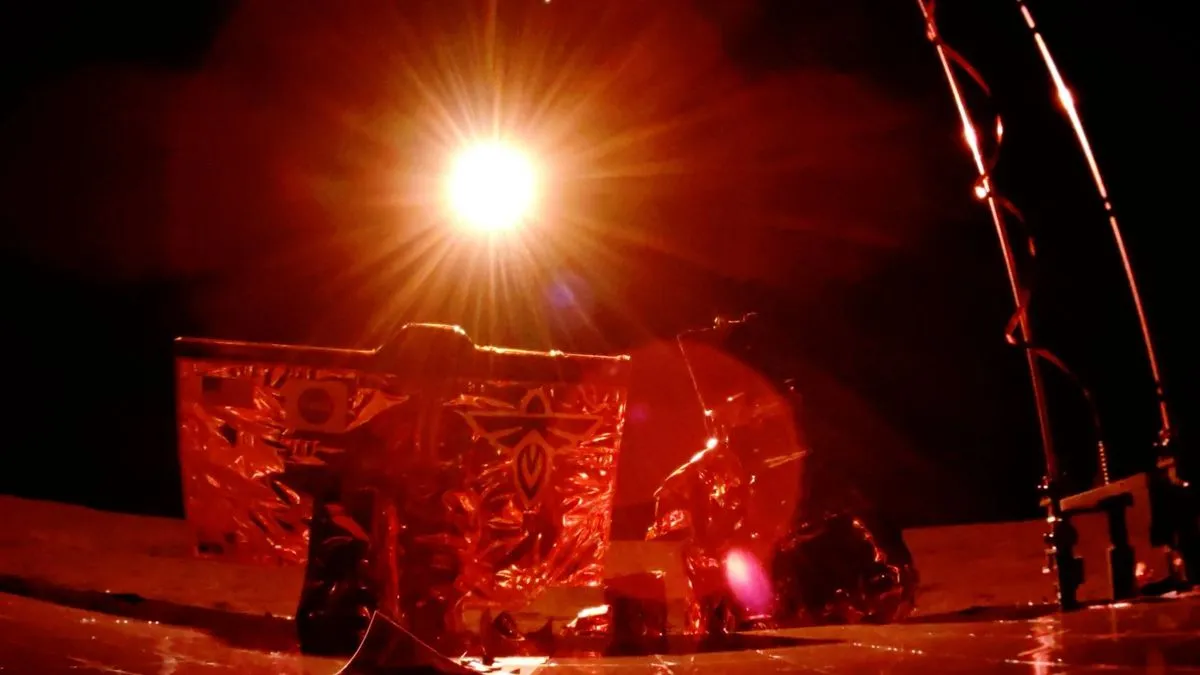
On the night of March 13-14, millions around the globe were captivated as they witnessed the moon transform into a striking shade of red during the blood moon total lunar eclipse. However, while Earthlings marveled at this celestial phenomenon, a spacecraft known as Blue Ghost, operated by Texas-based Firefly Aerospace, was stationed on the moon, capturing breathtaking visuals of another celestial event: the Earth eclipsing the sun.
Firefly Aerospace shared a series of remarkable images showcasing this cosmic interplay. The images reveal the distant sun gradually being obscured by the dark silhouette of Earth, ultimately resulting in a radiant ring of sunlight. Additionally, Firefly released a captivating time-lapse video of the entire eclipse, illustrating the gradual progression as the Earth progressively blocks sunlight until near-total darkness envelops the lunar surface.
This extraordinary phenomenon marks the moment of totality during the lunar eclipse, when the sun’s disk is entirely obscured, and the moon is enveloped in the darkest part of Earth’s shadow. The total lunar eclipse lasted approximately six hours, from midnight to 6 a.m. EDT, with the peak phase of totality occurring between 2:30 a.m. and 3:30 a.m. EDT. During this time, on Earth, observers witnessed the moon take on a vivid red hue, a stunning effect caused by Rayleigh scattering. This phenomenon occurs when shorter, blue wavelengths of sunlight scatter through Earth's atmosphere, leaving only the longer, red wavelengths visible to the moon.
Coincidentally, the lunar eclipse bore a striking resemblance to the memorable total solar eclipse that traversed North America last April. As Earth obscured the sun, only the outer atmosphere, or corona, was visible through Blue Ghost’s cameras. The time-lapse footage notably illustrated the spacecraft turning red as sunlight filtered through Earth’s atmosphere, creating a surreal visual experience.
As totality concluded, sunlight began to peek around the edges of Earth, producing a stunning diamond ring effect in the sky. This breathtaking spectacle is the result of the intricate balance between the sizes and orbital distances of Earth, the moon, and the sun. While eclipses can occur on other planets, the unique conditions on Earth provide a distinctive view that allows lifeforms to witness such dazzling displays of starlight.
Though images like these are incredibly rare, they are not unprecedented. NASA's Surveyor 3 lunar spacecraft recorded a similar total eclipse back in 1967. The recent total lunar eclipse serves as both a nostalgic reminder of the past and a precursor to upcoming celestial events. Eclipses, by nature, often occur in pairs, with solar eclipses typically following two weeks after lunar eclipses. This pattern is due to the lunar cycle, where lunar eclipses can only take place during a full moon, while solar eclipses happen during a new moon when the moon is positioned between Earth and the sun.
As we continue to explore and document these celestial events, the interplay between the sun, Earth, and moon remains a source of wonder, illuminating the beauty of our universe.